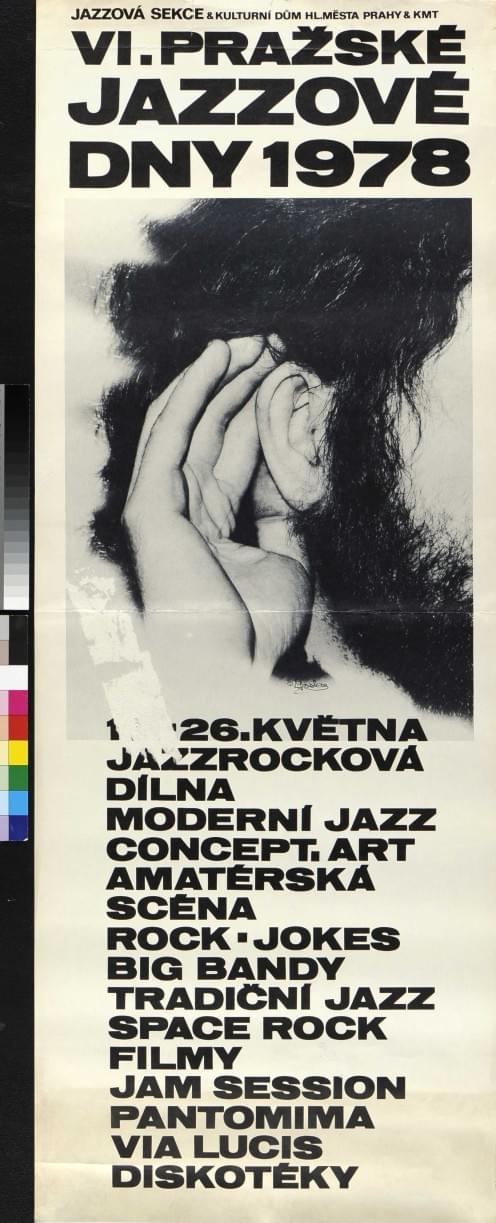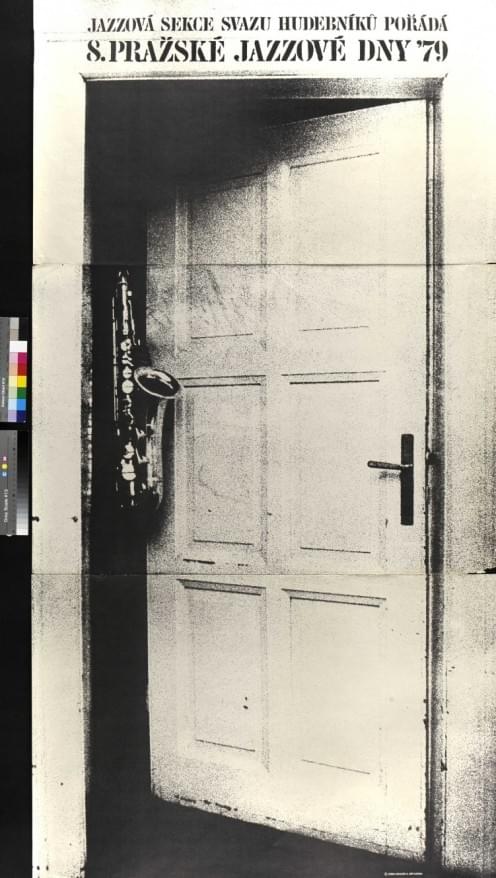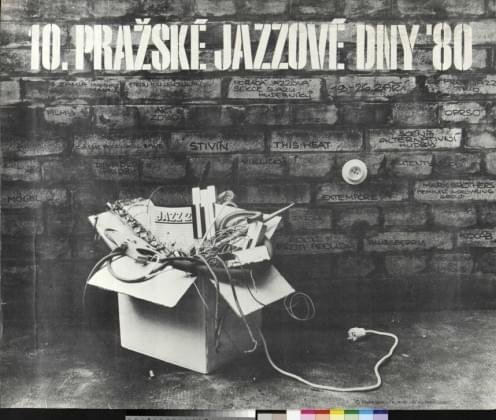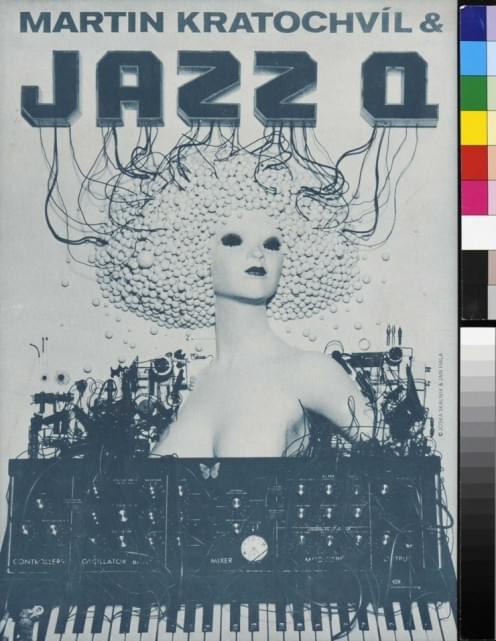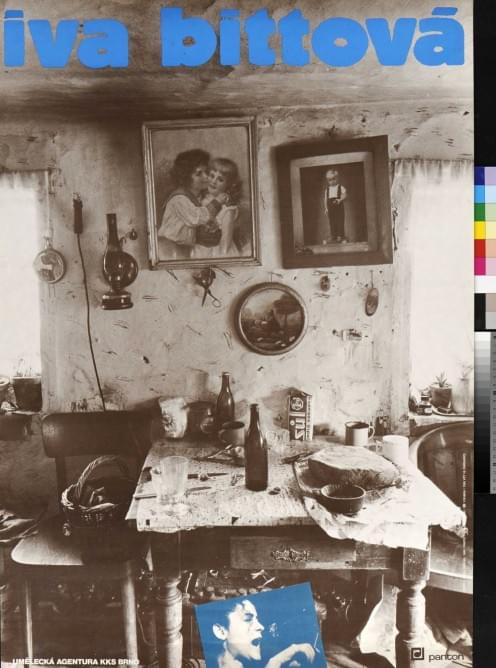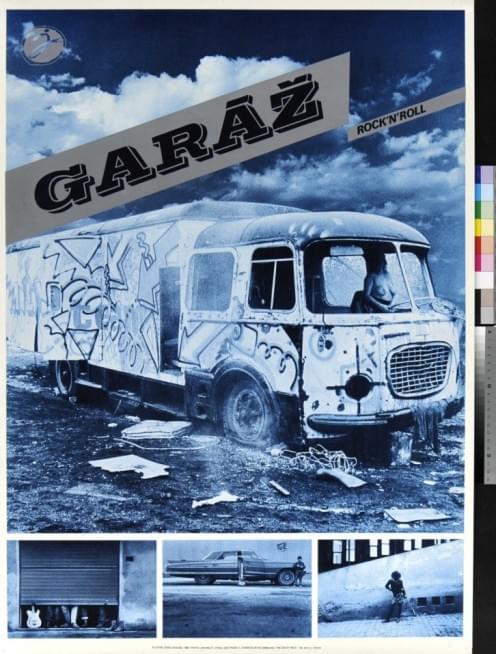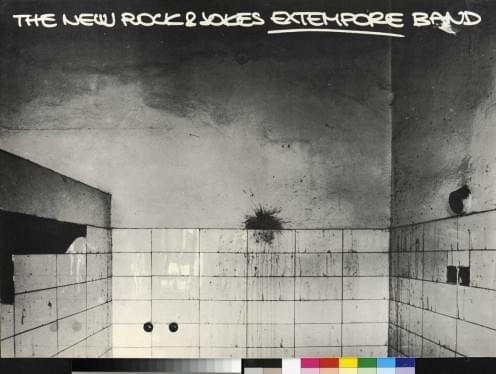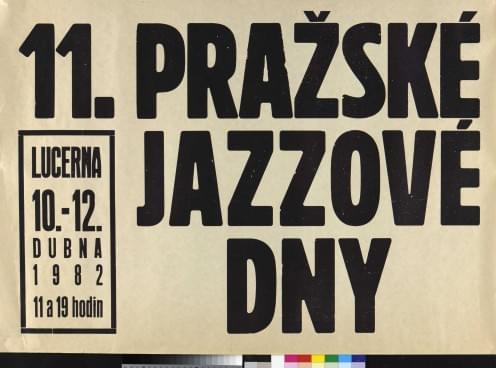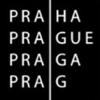Joska Skalník: We don’t have to dance
15 Mar – 4 Jun 2018
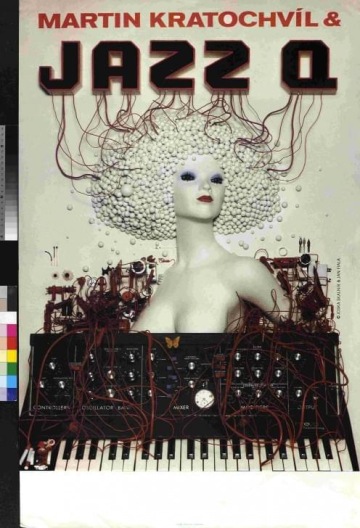
Joska Skalník (1948) was one of the leaders of the Jazz Section, which came together almost a half century ago. Skalník is with no exaggeration the father of this state-uncontrolled organization’s easily recognized visuals. The simple graphic language he chose for what today would be termed its “unified visual style” (like for their record covers) was characterized by a self-confident purity that played well with the samizdat aesthetic and the era’s limited print quality.
In a similarly convincing manner, he worked with poetically surreal collages and assemblages, making reference to artistic strategies of Anglo-American authors of music-related print material. For its time and place, it was an innovative and ingenious mixture. It also became the foundation for the aesthetic sensitivity of a clan to which the dictatorship of mass media and the taste of its consumers were something foreign. Paradoxically, Joska Skalník’s position was an advantageous one. He did not need to take into account the taste of these institutions nor of their audience – the bands for which he worked didn’t play for them anyway.
During the past twenty years, Joska Skalník downplayed his work as a graphic designer. He usually didn’t even include it in his retrospective exhibitions. This year, when he will turn 70, he decided to exhibit this segment of his work in a broad, representative manner, making it possible to comprehend not only its aesthetic code, but also its meaning in the half-forgotten climate of real socialism.
The name “We don’t have to dance” follows from the context of the exhibition, and is explained in detail in the exhibition itself.
Exhibition curators: Pavel Büchler and Karel Haloun
Architect: Petr Pištěk
During the exhibition Joska Skalník: We do not have to dance there is opportunity to see the exhibition of Libor Fara: Books and posters in the Archive of Fine Arts on the first floor of the DOX Centre for Contemporary Art.
Painter and graphic artist Libor Fára (1925-1988) was interested in philosophy, poetry, literature, music, jazz, film, photography, and theatre. In 1962 he began working at Divadlo Na zábradlí [Theatre on the Balustrade] - legendary is his set design for Alfred Jarry’s Pere Ubu, from 1969 onward he worked at Činoherní klub [The Drama Club], where he created the theatre’s timeless logo, worked on programmes and other printed materials, designed posters, sets, props, and costumes (among others Pavel Landovský: Hourly Hotelier, 1969, Anton Pavlovich Chekov: The Cherry Orchard, 1969, Maxim Gorky: The Lower Depths, 1971). In 1976 Joska Skalník joined the Drama Club as a full-time artist. “Here I met artist Libor Fára, and it was a fateful encounter based on the most beautiful and valuable friendship one could wish for.” Fára’s personality and work had a major influence on Skalník’s graphic art work.

